
Zoroastrian Heritage Ancient Westernmost Asia Minor
"From 25 B.C. to 235 A.D., five Roman provinces are established in Anatolia: Asia, Bithynia, Pontus, Galatia, and Cappadocia. During this period, numerous roads are built linking the highland cities to the Anatolian coast. Primarily designed for military use, they become important communication and trade routes. By the mid-third century, the expanding power of the Sasanian empire to the east.

Asia Minor in the Bible The nowadays Anatolia Biblical Empires
This is a collection of 283 beautiful historical maps of Asia Minor (including the Armenian Highlands), the Caucasus, Iran, and neighboring lands including the Aegean Basin, the Levant, and northern Africa, from around 1500 B.C. to around 1500 A.D. Cartographers include: Samuel Butler, William Shepherd, Ramsey Muir, Heinrich Kiepert, William Ramsay, Keith Johnston, George Adam Smith, Suren.
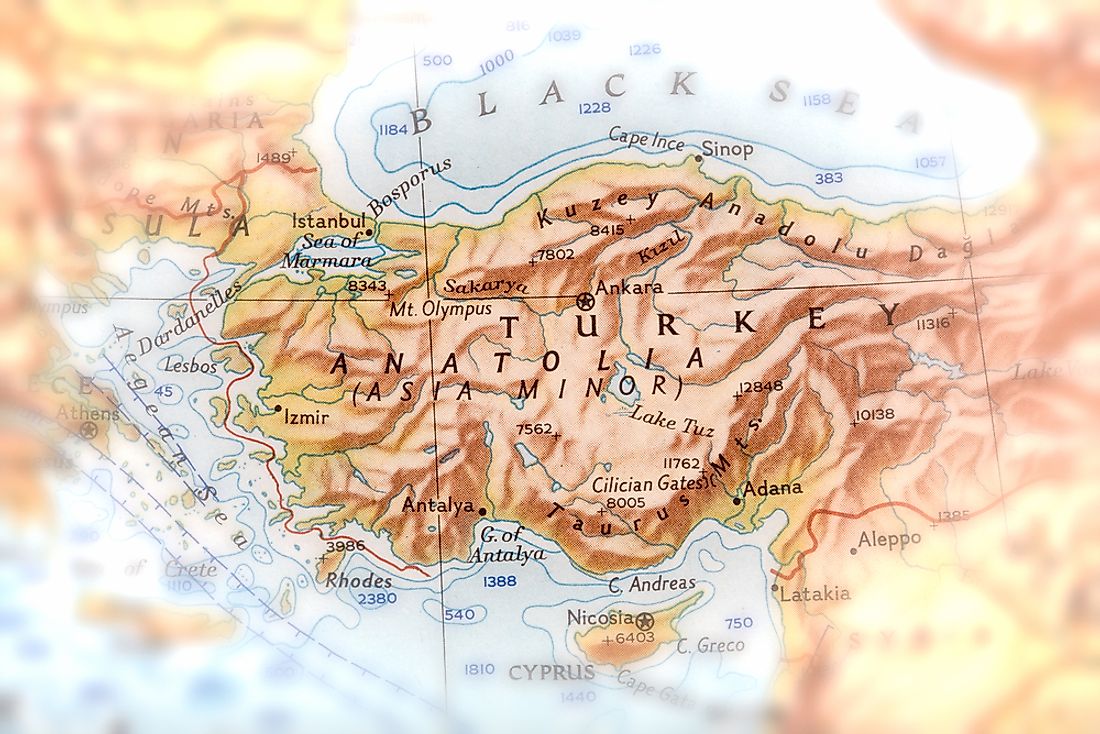
Where is Asia Minor? WorldAtlas
Anatolia, also known as Asia Minor, is a large peninsula in West Asia and is the western-most extension of continental Asia. The land mass of Anatolia constitutes most of the territory of contemporary Turkey.Geographically, the Anatolian region is bounded by the Turkish Straits to the north-west, the Black Sea to the north, the Armenian Highlands to the east, the Mediterranean Sea to the south.
Old Asia Minor Map
Anatolia / Asia Minor in the Greco-Roman period. The classical regions, including Mysia, and their main settlements. Mysia (UK / ˈmɪsiə /, US / ˈmɪʒə / or / ˈmiːʒə /; Greek: Μυσία; Latin: Mysia; Turkish: Misya) was a region in the northwest of ancient Asia Minor [1] ( Anatolia, Asian part of modern Turkey ). It was located on.

Ancient Map of Asia Minor Stock Photo Alamy
Late Bronze Age regions (circa 1200 BC) Late Bronze Age regions of Anatolia/Asia Minor (circa 1200 BC) with main settlements.. Alasiya / Alashiya (later Cyprus in the Classical Age, to the south of mainland Anatolia or Asia Minor); Assuwa, roughly most part of West Asia Minor / Anatolia, it was a confederation (or league) of 22 ancient Anatolian states that formed some time before 1400 BC (may.
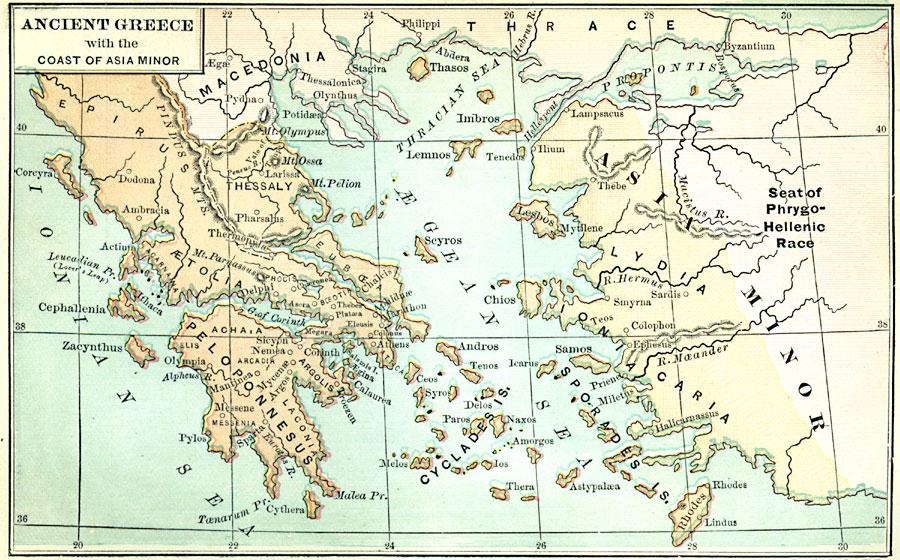
Ancient Asia Minor Map
Lydia, ancient land of western Anatolia, extending east from the Aegean Sea and occupying the valleys of the Hermus and Cayster rivers. The Lydians were said to be the originators of gold and silver coins.During their brief hegemony over Asia Minor from the middle of the 7th to the middle of the 6th century bce, the Lydians profoundly influenced the Ionian Greeks to their west.

ANCIENT ASIA MINOR. Turkey. Cappadocia Cyprus Galatia Phrygia. SDUK 1844 map Stock Photo Alamy
Ancient Asia Minor is a geographic region located in the south-western part of Asia comprising most of present-day Turkey. The earliest reference to the region comes from tablets of the Akkadian Dynasty (2334-2083 BCE) where it was known as The Land of the Hatti and was inhabited by the Hittites. It was among the most significant regions of.
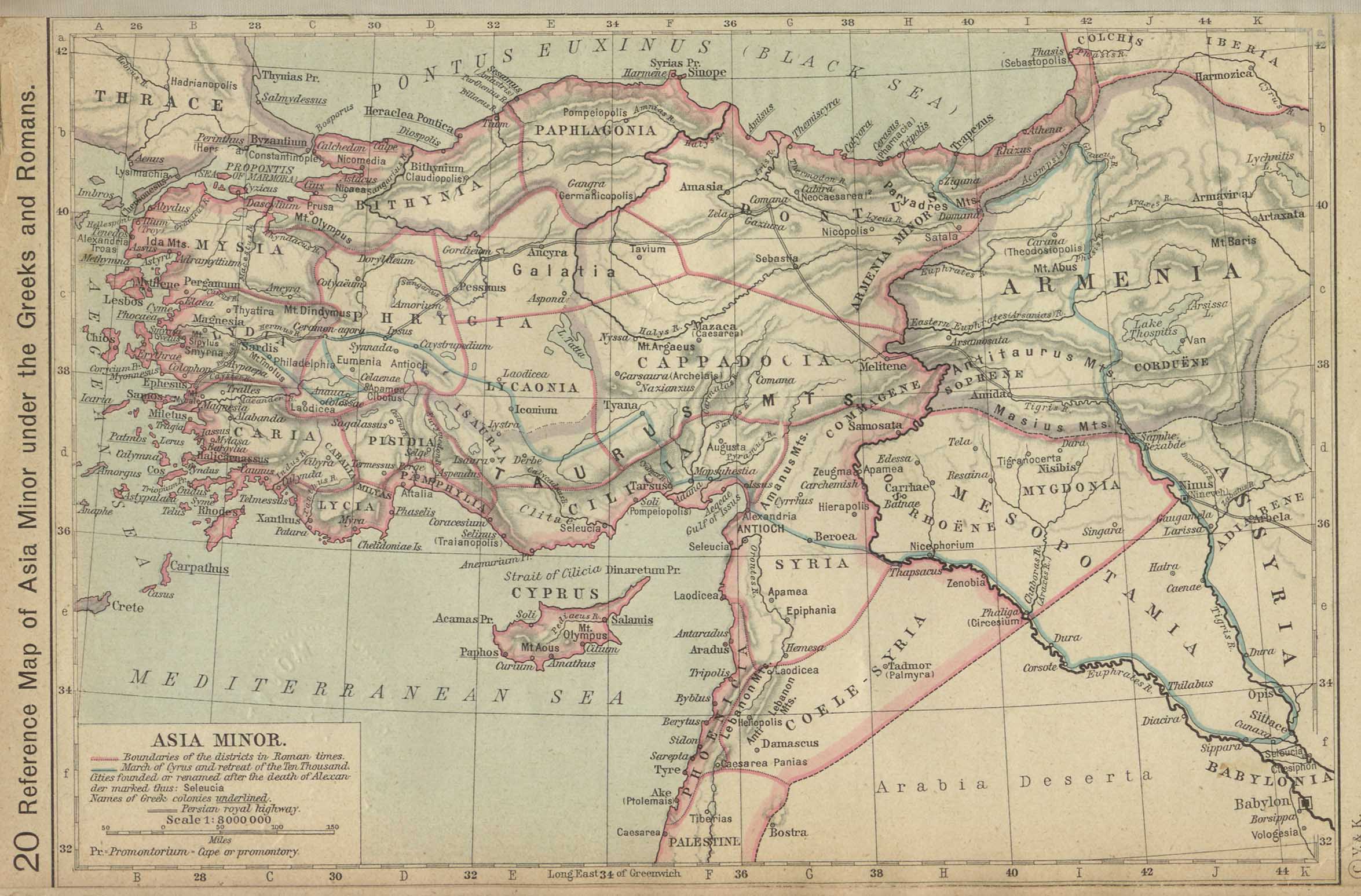
Map Asia Minor under the Greeks and Romans
The Aegean Sea lies between the coast of Greece and Asia Minor (modern-day Turkey).It contains over 2,000 islands which were settled by the ancient Greeks; the largest among them being Crete (Kriti) and the best known and most often photographed Santorini (Thera or Thira). Both of these islands have strong associations with ancient history and Greek mythology in that Crete features.

Antique Map of Asia Minor by Cluver (1685)
The majority of modern-day Turkey was once a part of ancient Asia Minor, a province in the southwest of Asia. The region is first mentioned on tablets from the Akkadian Kingdom (2334-2083 BCE), when the Hittites lived there and called the area The Land of the Hatti. It was one of the most important ancient geographic areas.
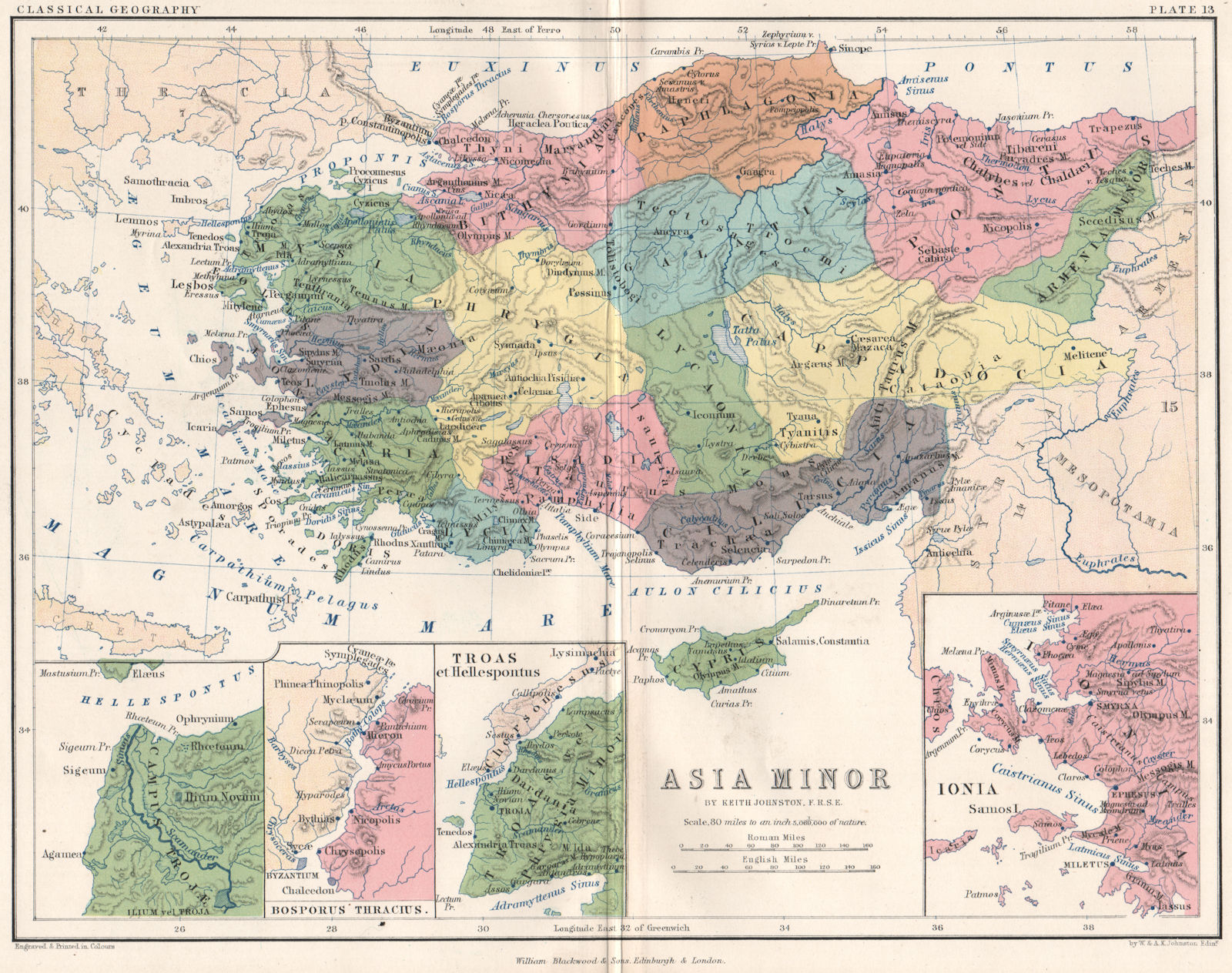
'Asia Minor'. Ancient Turkey. Sigeum Chrysopolis Troas Ionia. JOHNSTON 1855 map
The history of Anatolia (often referred to in historical sources as Asia Minor) can be roughly subdivided into: Prehistory of Anatolia (up to the end of the 3rd millennium BCE), Ancient Anatolia (including Hattian, Hittite and post-Hittite periods), Classical Anatolia (including Achaemenid, Hellenistic and Roman periods), Byzantine Anatolia (later overlapping, since the 11th century, with the.

Map Of Asia Minor In Ancient Times HighRes Vector Graphic Getty Images
Caria is the name given during ancient times to the southwestern region of Anatolia's Aegean shore in Asia Minor, present-day Turkey.Caria's neighbours included Ionia in the north and Lycia in the east whereas nowadays it mostly covers the Muğla province. Its inhabitants were the Carians and the Leleges (the descendants of the Carians).

Map including Ancient Near East, also Called Asia Minor
Ionia , Ancient region, western coast of Asia Minor (modern Turkey) bordering the Aegean Sea. It consisted of a coastal strip that extended from the mouth of the Hermus River to the Halicarnassus Peninsula, a distance of 100 mi (160 km). In the 8th century bc there were 12 major Greek cities in the region, including Phocaea, Erythrae, Colophon.
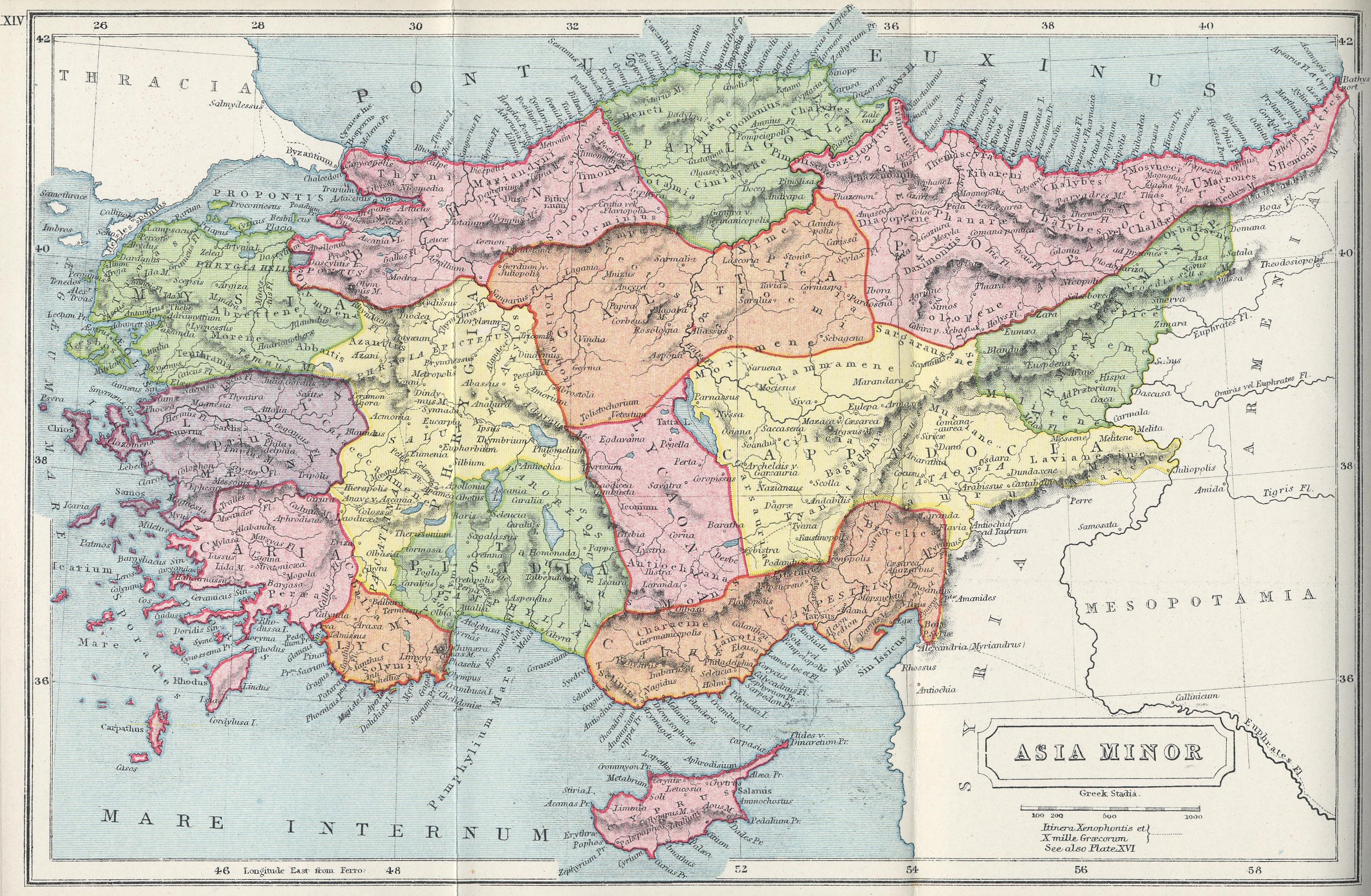
File1907 map of Asia MinorAtlas of Ancient and Classical Geography by Samuel Butler.jpg
The first cultural centers of Asia Minor. Asia Minor (also known as Anatolia) is one of the main centers of civilizations of the ancient East. The formation of early civilizations in this region was due to the entire course of the cultural and historical development of Anatolia. In the most ancient era (in the VIII-VI millennium BC), there were.

Asia Minor in the Early 1st Century CE (Illustration) Ancient History Encyclopedia
The research team compared the ancient DNA to about 400,000 present-day people stored in a UK gene bank, to see the MS-linked genetic variations persist in the north, the direction the Yamnaya.
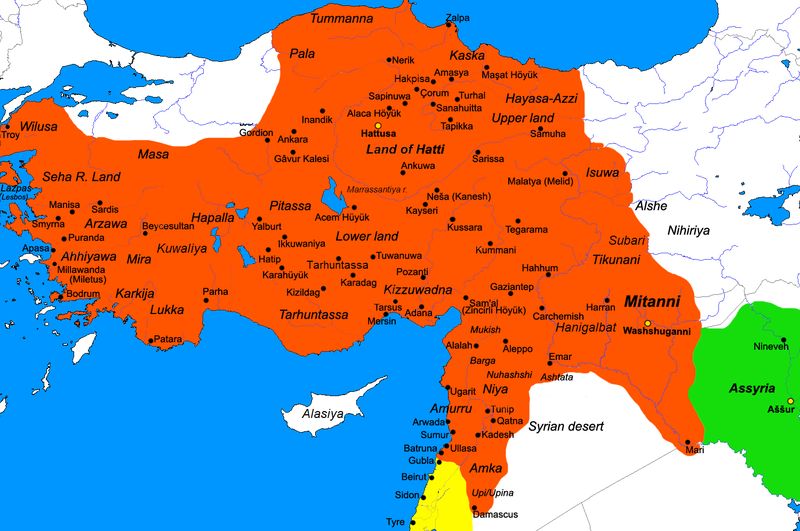
Zoroastrian Heritage Ancient Westernmost Asia Minor
See map of Ancient Anatolia in 200 CE. The 3rd century CE saw Asia Minor experience a taste of the chaos visited upon other parts of the Roman empire by Germanic invaders. The Goths attacked the region on three occasions in the years after 256, each time committing much destruction.
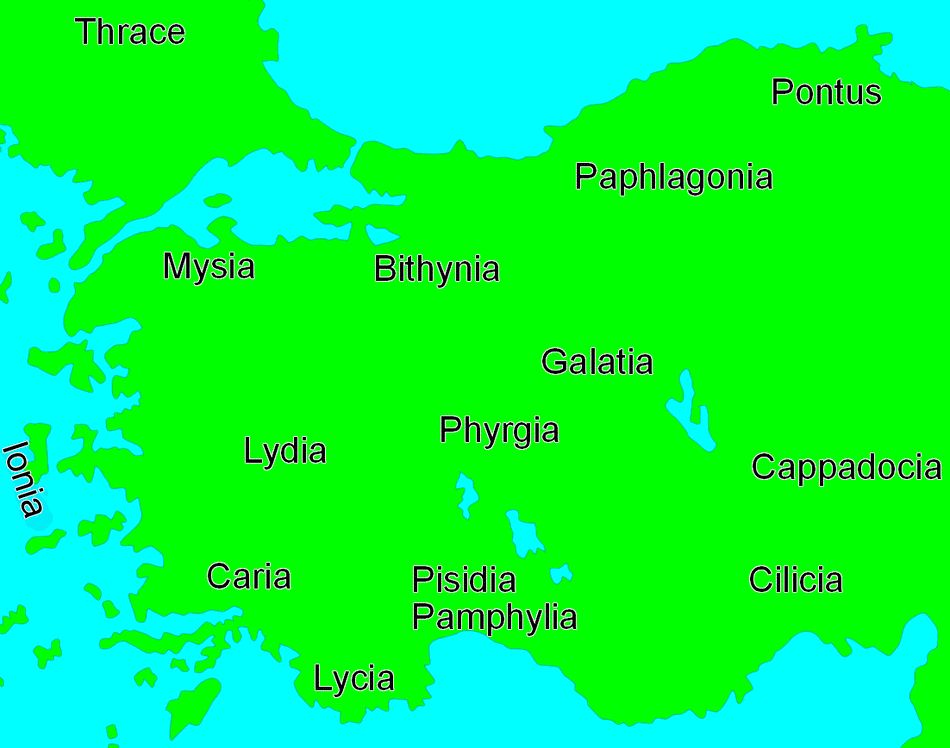
Regions of Ancient Asia Minor
Anatolia, also known as Asia Minor, is a large peninsula in West Asia and is the western-most extension of continental Asia. The land mass of Anatolia constitutes most of the territory of contemporary Turkey. Geographically, the Anatolian region is bounded by the Turkish Straits to the north-west, the Black Sea to the north, the Armenian Highlands to the east, the Mediterranean Sea to the.